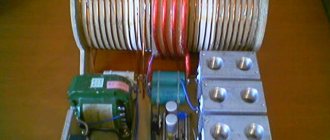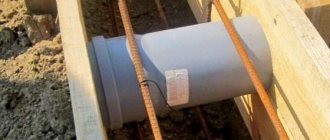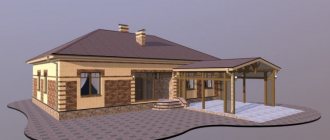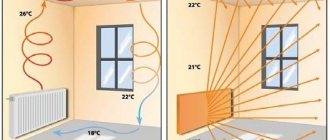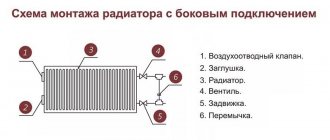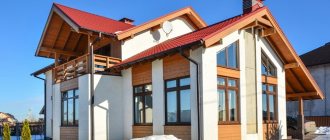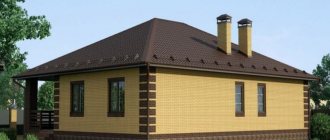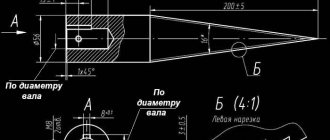The installation of an independent electrical system will provide energy to private buildings not connected to centralized networks. The result will help reduce the energy costs of cottages and houses. But in order to take advantage of the listed advantages, you need to know exactly how to make an autonomous power supply for a private home. Isn't it true?
We will talk about the design of independent power supply systems. Here you will find the fundamental principles of the device and important nuances of organizing the supply of electricity to private residential properties. The information we provide is carefully checked, systematized, and the information complies with building regulations.
In the article we propose, the options for constructing private energy systems are thoroughly analyzed, all possible sources of energy are presented and evaluated. The principles of construction and operation of an autonomous power supply are described in detail, the presented data is supported by photos and videos.
Weighted assessment of an independent system
Modern systems for autonomous power supply use a variety of resources to generate energy. This allows you to receive high-quality electricity without fluctuations even in the most remote and sparsely populated places, where all the benefits of civilization have not yet reached.
Advantages of autonomous electrics
The main advantage of autonomous power supply systems is the absence of consumption standards and fees for used energy. This allows you to provide any level of comfort in a residential building, regardless of whether there are central communications nearby or not.
If the preliminary power calculations are made correctly and are not underestimated, the system will work like clockwork and the owners will not encounter problems such as unexpected power outages and voltage surges.
A significant advantage of an autonomous power supply is the absence of surges, drops and overvoltages in the network, due to which household and computer equipment fail many times faster
The risk that household appliances in your home will fail or burn out due to an unexpected power surge will be reduced to zero. The quantity and quality of electricity received will always be the same and exactly as was originally planned in the project.
Equipment that provides independent supplies of electricity has a high level of reliability and rarely fails. This advantage remains relevant if basic operating rules and regular maintenance of individual elements and the entire system are observed.
In addition, pilot programs are already operating today that allow owners to sell excess electricity to the state. However, it is worth thinking about using this interesting opportunity in advance, even at the stage of developing a power supply system project.
Additionally, you will need to issue a package of permits confirming the ability of the available devices to generate the required amount of energy of appropriate quality.
Disadvantages of an independent power supply
The disadvantages of an independent power supply system include the rather high cost of equipment and significant operating costs.
The disadvantages of an autonomous power supply include the need to allocate space for placing equipment, carry out independent maintenance of the system and replace worn out elements at your own expense.
Electricians strongly recommend that owners make all calculations very carefully and clearly clarify the technical parameters of the system planned for installation. Otherwise, a situation may arise when the unit producing electricity fails without having time to pay for itself.
The owners also carry out repairs to the autonomous complex at their own expense, and these services cost a significant amount of money. If the house is located in a remote or hard-to-reach area, you will have to go to the craftsmen personally or additionally pay for the team to go to the site.
Moreover, everything will need to be done quite quickly, since home communications and amenities that run on electricity will be unavailable at this time.
If solar panel modules are selected as an autonomous energy generation system, they will need to be periodically cleared of debris in windy weather, and must be cleared of snow in winter. Only with such care will they fully function throughout the entire operational period.
Regular preventive inspection and scheduled maintenance of operating units will significantly reduce the chance of breakdown of autonomous devices, but this may also require a visit from specialists, which costs money.
Of course, the owner will do some of this work himself, but more serious issues that require certain experience and specific knowledge will still entail professional intervention.
Characteristic
The boiler room's reserve fuel is the so-called irreducible and operational fuel. In the first case, this is the reserve that should ensure the functioning of heating equipment at the lowest temperatures without comfort in heated rooms. But operational fuel is the reserve that ensures the normal functioning of heated facilities. It follows from this that different regulations for the use of reserves may be applied in different situations.
The absence of such a reserve in the conditions of a long winter, characteristic of most of the territory of Russia, is unacceptable. Interruptions in the supply of solid (coal) and liquid (fuel oil, diesel fuel) fuels may occur due to weather conditions.
Unfortunately, accidents still occur on pipelines transporting the same liquid hydrocarbons or natural gas.
Determining the Best Energy Source
Choosing an alternative energy source for autonomous power supply to a residential building is a very important and responsible moment that requires a serious approach.
The most popular and most common options include:
- generators running on diesel fuel or gasoline;
- solar panels;
- batteries of large volume and power;
- hydroelectric systems;
- wind energy converters.
Each source has its own unique characteristics and features. Owners should familiarize themselves with them in advance and, based on this information, determine the best option for a system that can satisfy all the electrical needs of a private residential building.
Content
- Purpose of UPS for home
- Types of UPS
- UPS backup type (off-line)
- Line-interactive UPS
- Online UPS (on-line)
- Criteria for choosing a UPS for the home
- UPS type
- Power
- Operating voltage range and output waveform
- Battery life and transfer time to battery
- Availability of additional functionality
- Common mistakes and an example of the right choice
Features of generators
A generator is the fastest and easiest way to provide a private home with electricity. To operate, the unit uses gasoline or diesel fuel and, as a result of its combustion, produces the required amount of energy.
The main advantage is the complete independence of the device from seasonal changes and weather fluctuations. The disadvantages include the mandatory presence on site of a specially equipped fuel storage facility designed for a volume of 200 liters or more.
A diesel generator set is convenient and easy to operate, but for full operation it needs to receive at least 250 ml of fuel per hour. Powerful stations capable of providing energy to a small private house with actual resource consumption of several kilowatts per day will “eat” about a liter of diesel fuel for 60 minutes
Most often, gasoline and diesel generator sets are used as backup or temporary sources of electricity. This is due to the fact that for full operation the devices require significant amounts of fuel, the cost of which is constantly increasing.
A powerful gasoline or diesel generator is capable of providing an uninterrupted supply of electricity if the required amount of fuel is available. However, the device produces a lot of noise during operation. In order not to suffer from unwanted sounds, it is worth placing the unit in one of the adjacent utility rooms located at some distance from your own home and neighboring houses
The equipment itself is also expensive and requires preventive maintenance. More profitable options for generator sets include gas units. They do not require an uninterrupted supply of fuel and do not require storage for fuel materials.
However, the full operation of these devices is ensured by such a point as a mandatory connection to the central gas network, which is not always possible and affordable.
Installation of a gas generator in a house is carried out only on the basis of a package of permits and with the mandatory participation in the installation of a team of craftsmen from the local gas distribution company. It is not recommended to connect the device to the gas pipeline yourself in order to avoid potential leaks and various problems in the future.
It is because of these difficulties that generators are rarely chosen as the main source of supplying electricity to a private home.
But generators are an ideal solution for temporary use, for example, during the construction of a country house and the preparation of documents for its connection:
Image gallery
Photo from
Generator for the duration of construction work
Four batteries and an inverter
Lighting at night and in the evening hours
Lighting for wiring and finishing
During the first stages of construction, the generator will serve as the main source of energy, and after paperwork is completed and permission to connect to the general power grid is obtained, it will become backup equipment and will certainly come in handy more than once.
Backup boiler paired with an electric boiler
Electrical networks in the current state they are in cannot be considered a guaranteed source of energy for heating a home. This means that any heating system using electricity must be duplicated.
If you have an electric heating boiler with a liquid system installed, you need to select a backup for it - a backup boiler that will work during periods of power outages or at times when not all phases have sufficient voltage to heat the house.
Which backup boiler should I choose to pair with an electric one? This can be any boiler with an autonomous fuel supply:
- Diesel boiler with a tank for diesel fuel.
- Solid fuel boiler with a supply of firewood, coal or pellets.
- Gas boiler on a gas train or connected to a gas holder.
If you heat your house with a system of electric convectors, it is not economically feasible to install a backup liquid heating system with radiators and a boiler. In this case, it is better to use an air heating furnace as a backup heat generator. This could be a stationary brick stove, a steel or cast iron stove, or a fireplace stove.
These can also be gas convectors, powered from a system of gas cylinders with a decent volume - 27 or 50 liters.
Since electricity is the most expensive energy carrier for heating, any heat generator using any fuel can perform the function of backup heating.
Wind energy for autonomous power supply
In the case where meteorological or any other objective reasons do not allow the installation of solar panels or collectors, it makes sense to pay attention to the assembly and installation of a wind generator. It is a turbine placed on high (from 3 meters) towers.
It captures the kinetic energy of the vortex flow, converts it into mechanical energy by rotating the rotor, and then turns it into an electrical resource using special inverters.
The owner of a private house who has planned to install a wind generator with a power of more than 10 kW must carefully study information about changes in the direction and strength of the wind in his area over the past 20 years
Statistics can be provided by the weather service and various Internet services that allow you to monitor the weather online. If the winds in the region are considered a rare phenomenon and do not have the required strength, installing a “wind turbine” will be impractical.
Image gallery
Photo from
Wind generator in a suburban area
Wind turbine controller
Batteries for reserve charge
Inverter for converting the received current
The unit is reliable, the wind generator does not create harmful emissions into the atmosphere and does not leave production waste, but for full operation it urgently needs a constant wind blowing at a speed of at least 14 kilometers per hour. This is a very important condition, and if it is not met, the device simply will not cope with the assigned tasks.
Thoughtful placement of equipment
We will select the optimal location for the heating boiler, heating radiators, etc. Our engineers will draw up a layout diagram and pre-approve it with you. We guarantee that the entire house will warm up evenly.
| Monday | Open 24 hours |
| Tuesday | Open 24 hours Now open |
| Wednesday | Open 24 hours |
| Thursday | Open 24 hours |
| Friday | Open 24 hours |
| Saturday | Open 24 hours |
| Sunday | Open 24 hours |
| Name of works | Explanations | Unit change | Cost of work, rub. |
| Installation of a heating device (radiator, floor convector) | Installation of the device, installation of shut-off and control valves, connection of the forward and return pipelines (The linear dimensions of the device do not exceed 2 meters). | PC. | 2 800 |
| Installation of a convector built into the floor | Standard version of the convector. The linear dimensions of the device do not exceed 2 meters. | PC. | 3 740 |
| Installation of radiator heating distribution manifold and manifold cabinet | Connecting pipelines, installing shut-off valves. External or built-in cabinet. The built-in wardrobe is mounted in a finished niche. Niche production is available for an additional fee. | PC. | 5 300 |
| Installation of mains and risers | DN 0-16 (cross-linked polyethylene, polypropylene, metal-plastic). | m.p. | 65 |
| Installation of mains and risers | DN 17-20 (cross-linked polyethylene, polypropylene, metal-plastic). | m.p. | 95 |
| Pressure testing of the building heating system | By heated area. | sq.m. | 15 |
Heating a private home using any type of fuel!
- main gas;
- imported gas from a gas tank;
- electricity;
- diesel fuel;
- firewood, coal, peat.
Local hydropower systems
Using a hydraulic turbine to supply a residential building with electricity is a very realistic and profitable option, but only if there is a river or lake near the buildings. A small system powered by water energy is absolutely safe both environmentally and socially, is very easy to operate and has good efficiency.
Small hydraulic turbines are fully automated and do not require human participation in their operation. The quality of the energy they generate meets all GOST requirements both in frequency and voltage level
The lifespan of a miniature hydroelectric power station exceeds 40 years. For correct functioning, the system does not require large reservoirs and does not require flooding of large areas.
Image gallery
Photo from
Water Energy Option
Homemade turbine from wheel rims
Operating principle of mini hydroelectric power station
Auger in a hydroelectric power plant
Before installation, it is necessary to draw up an installation project and obtain the appropriate permits.
Solid fuel boilers
Solid fuel and pellet boilers are one of the most affordable ways to heat a private home without gas . They are cheaper than a heat pump and are able to completely provide the building with heat, regardless of the time of day and street temperature.
But when choosing and installing solid fuel boilers, you need to consider:
- You need to constantly monitor the combustion and add firewood 1-2 times a day. Of course, this is not so difficult, but in comparison with gas boilers it causes inconvenience. In pellet boilers this is easier, since they provide automatic supply of pellets into the firebox from the hopper.
- Wood processing is not developed in all regions and good firewood may have to be transported from afar. So make sure you have access to at least 2-3 firewood sellers.
- You need to buy firewood one year before the start of the heating season. A year is the required period for the firewood to dry out and gain energy value. Initial low humidity only for fuel briquettes.
- You become dependent on firewood instead of gas.
- At certain volumes of consumption, heating with wood is not cheaper than gas.
- Need storage space. If firewood is stored incorrectly, it will get wet and lose its energy potential. See the article on how to store firewood.
- From time to time you will have to clean the chimney and the inside of the boiler from soot.
Batteries for autonomous systems
The principle of operation of the battery is clear and simple. As long as there is electricity in the central network, the batteries are charged from the outlet and accumulate resource in their blocks. Solar batteries function in a similar way.
When energy supplies are interrupted, the modules, through a special inverter installation, supply electricity to household appliances and various home systems.
When choosing a battery to create a backup electrical system in a residential building, it is worth determining which devices and modules of household appliances must be connected in the event of a lack of light. By adding together their base power, you can get a number indicating the capacity of the battery, capable of powering the most necessary devices
They are not suitable for constantly providing a living space with electricity, but they will cope with the role of a backup complex perfectly.
The following article, which is entirely devoted to this interesting issue, will introduce you to the best developments for organizing alternative energy in a country house.
No. 3. Connection type
Before purchasing a boiler of a certain power, you need to find out the features of the electrical wiring in the house. Among boilers with a power of up to 10-12 kW, you can find models that can be connected to both single-phase (220 V) and three-phase networks (380 V). It will not be possible to use more powerful boilers with a single-phase network - you will need to connect the house to a three-phase network.
To connect the boiler to the panel, it is better to use a stranded copper wire, which, with higher conductivity, will heat up less.
Pellet fireplace
A pellet fireplace also only heats the air around it. But it has two important advantages:
- It is not necessary to have a chimney in advance. For such a fireplace, you need a small diameter pipe, which is led into the wall, and not through all the floors of the building.
- There is automatic fuel supply. That is, you do not need to constantly monitor combustion. It is enough just to maintain a supply of fuel pellets in the bunker. Therefore, a pellet fireplace is quite suitable as an alternative heating without gas. But from a practical point of view, this is inconvenient: the fireplace is locally effective and only heats the room in which it is installed. It is impossible to use heat throughout the entire house.
Disadvantages:
- You need access to high-quality pellets that will not clog the burner with soot and burn well.
No. 5. Electric boiler power calculation
The power of electric boilers ranges from 2 to 60 kW (for industrial and commercial premises there are even 400 kW models) and is selected depending on the size of the room to be heated and whether there is a need to heat water for hot water supply. Ideally, to determine power, it is necessary to carry out a full thermal calculation, taking into account not only the area of the room, but also the height of the ceilings, the level of thermal insulation, the number of windows, doors and other factors. To do this, it is better to turn to professionals, but calculate the approximate power yourself.
The easiest way is to use the proportion according to which it is necessary to provide 1 kW of boiler power for every 10 m 2 of area, provided there is sufficient thermal insulation and with a ceiling height of no more than 3 m. It is better to add a little more reserve (10-15%), and if you use a double-circuit boiler , then add another 25% to the resulting value. This calculation is quite conditional, and to obtain more accurate results you can use another, slightly more complex, formula.
The power of an electric boiler can be calculated as follows:
- W = (40*S*h+Qo +Qd )*k , where
- 40 – average required boiler power per 1 m3, 40 W/m3;
- S – area of the house/apartment;
- h – ceiling height;
- Qо – heat loss through windows, 100 W for each;
- Qd – heat loss through doors, 200 W for each;
- k is a coefficient that depends on the region; for the southern regions of the country it can be taken as 0.7-0.9, for the central and European parts - 1.2-1.4, for the north and far east - 1.8-2.0.
If the calculation is carried out for a private house , the result obtained is multiplied by another 1.5.
Let's say there is a house with an area of 85 m2, a ceiling height of 2.8 m, with 6 windows and 2 doors, it is located in the southern part of the country. The required power will be equal to W=(40*85*2.8+600+400)*0.8*1.5=12.6 kW.

